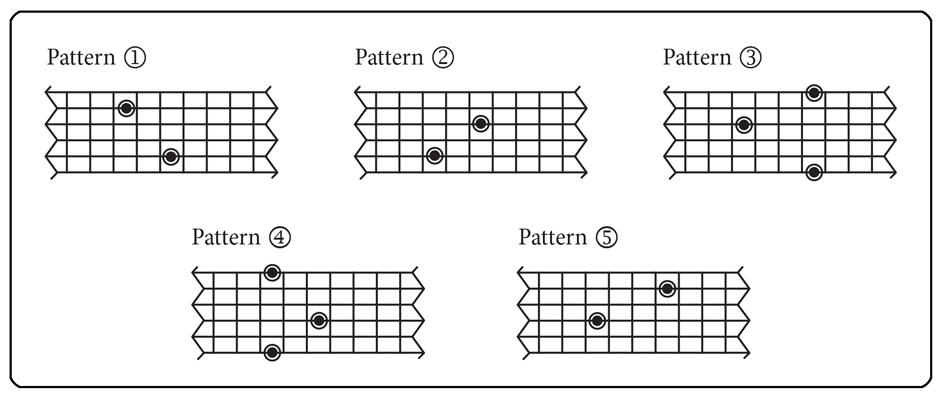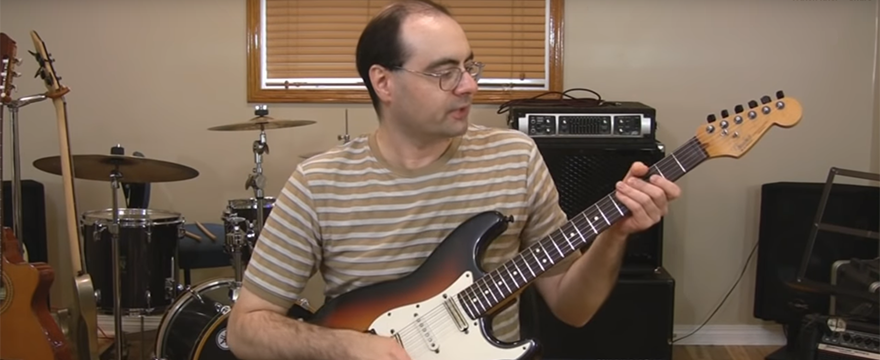The CAGED theory /system is a method of relating the chord outlines and the octave layouts of five popular open position chord patterns across the neck. This lesson explains the CAGED idea of fret-board understanding, and discusses the methods, benefits, and flaws of using CAGED. An octave pattern alternative is also discussed…
Q: I’m bored of the chords I know. I started doing a little research on chords and I found out you could play any one chord all over the neck. Then, I ran into something called The, CAGED, system and for the life of me, I cannot find a video lesson that explains it thoroughly.
I was wondering if you could do something on that topic. I’m sure many people would find this information very helpful, along with myself.
Thanks in advance,
Dan – Allentown, PA.
A: The fret-board layout principle that is widely known as the “CAGED” theory, is used by many guitar teachers to educate guitar students about octave layout and chord root location movement along and across the guitar fingerboard.
Since the CAGED theory relates specifically to the guitars open position chords, (and not directly to octave layouts) the system is rarely (if ever) taught by the guitar faculty members of music colleges and universities in Europe or in North America.
A numeric octave principle is generally used in place of the CAGED theory to teach neck layout understanding of; chords, scales and arpeggios.
C.A.G.E.D. THEORY CHORDS:

“C.A.G.E.D.” THEORY BENEFITS:
On the positive side, intermediate guitar students (who already know and understand their open position chords), can use their knowledge of each octave found within the CAGED chords to better comprehend how the octaves of the open position chords can shift onto the guitar neck.
The prerequisite however, is a solid knowledge of the open position CAGED chords and their individual octaves. Without the knowledge of the open chords and the octave layout of each one, the CAGED system will make little to no practical sense for the average guitar student.
“C.A.G.E.D.” THEORY DOWN-SIDE:
On the negative side of the equation, the CAGED system does have its flaws.
Introductory students who do not yet fully comprehend the open chords and the octaves within each chord, will have little to no idea of what benefits can result from learning the CAGED system.
Since a guitar student must have prior comprehension for all the open position “CAGED” chords (and each chords octave layout prior to learning the system), there will be almost no associated benefit to the concept of learning the CAGED theory.
Advanced beginners (and even some Intermediate students), will often become confused with respect to the direct relationship of the CAGED theory; chord names, the outline of each chords octave layout, and how the chords can become movable along the span of the neck using CAGED.
Since the CAGED system requires a good deal of prior knowledge and since it directly relates to the chord names of chord patterns (that a student may not thoroughly understand), the principles of the CAGED theory will often cause a student a good deal of confusion.
A BETTER ALTERNATIVE:
A better alternative to the CAGED theory is an octave based system.
Octave based learning of the neck (used at colleges and universities) relates to a series of numeric patterns of octave geometry.
This makes the “5” octave pattern approach (structured as; 1, 2, 3, 4, 5), universal to apply to any note, anyplace along and across the guitar fingerboard.
THE “5” OCTAVE PATTERN SHAPES:

